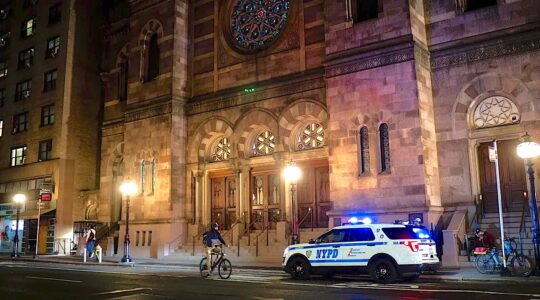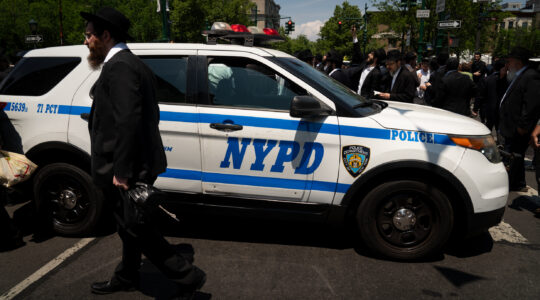Milton Resnick and Pat Passlof were together for 52 years, a pair of prominent downtown artists who each lived and painted around the corner from the other in separate buildings that once housed Lower East Side synagogues.
Both abstract expressionist artists, Resnick lived at 87 Eldridge and his wife at 80 Forsyth. He died in 2004, and when Passlof died in 2011 (they had no children), the Forsyth building was sold and, per her wishes, the Milton Resnick and Pat Passlof Foundation was established, with the aim of preserving, exhibiting and studying their work and the work of other artists, turning his former synagogue into a gallery space.
On March 24, the Milton Resnick and Pat Passlof Foundation will open its new doors to the public, with a retrospective show of Resnick’s work, including 30 pieces from the Foundation’s holdings as well as from private and museum collections. Plans are underway to feature poetry readings, lectures, concerts and dance in the space, and also to establish a research area with photo archives of the two artists’ work.
Nathan Kernan, president of the Foundation who is a writer, poet and friend of the artists, describes the former sanctuary space where Resnick created his large paintings as very dramatic, with a 30-foot ceiling.
“There’s a sense of solemnity in the space, which we also feel in Milton’s work.”
Built as part of a row of three tenements, the Eldridge Street building has a storied past: It was purchased in 1888 and remodeled into Bnai Tifereth Yerushalayim, Sons of the Glory of Jerusalem. The congregation removed floors and created a sanctuary with high-arched windows with crowning rosettes. On the façade, the name of the synagogue and date of its dedication has been restored.
The synagogue was also the first home of Mesivta Tifereth Yerushalayim, the yeshiva once headed by the renowned Rabbi Moshe Feinstein, which still exists, now on East Broadway.
“There’s a sense of solemnity in the space, which we also feel in Milton’s work.”
In the late 1960s, according to architectural historian Gerard R. Wolfe, author of “The Synagogues of New York’s Lower East Side,” the building was acquired by a Syrian Orthodox Church and then soon after sold to the Lincoln African Methodist Episcopal Church. In the 1970s, a developer converted it to a warehouse, and Resnick bought it in 1977.
Passlof’s 1874 building housed Congregation Kol Israel Anshe Poland, which bought the building in 1881 and added Gothic arched windows and fire escapes with Stars of David. Resnick and Passlof bought it in 1963 for $20,000.
“The paint and the emotion that comes through the handling of the paint creates the spirituality in his work.”
Geoffrey Dorfman, a painter and friend of the artists who serves as a trustee of the Foundation, recalls that when Resnick first bought the building, the women’s balconies were in place, and one could look down on his studio (he had to remove them per city ordinance). The extensive renovations by Ryall Sheridan Architects sought to preserve the atmosphere.
Resnick, who also wrote poetry, was born in Bratslav, Ukraine, in 1917, and came to the U.S. in 1923, and the family settled in Brooklyn. Dorfman, the artist’s biographer, says that when Resnick was 16, he knew he wanted to be an artist. When his father objected, he packed a suitcase, left home and attended the American Artists School, working as an elevator boy, selling blood and modeling in order to survive. In the 1930s, he worked on the WPA project, and served in World War II.
“Culturally, he was Jewish,” Dorfman says. “He wasn’t a religious person, but a very spiritual person in the larger sense as all artists are. If you look at his work, though, there are no images, it’s bereft of depicting anything. He observes the prescription against graven images — the paint and the emotion that comes through the handling of the paint creates the spirituality in his work.
Support the New York Jewish Week
Our nonprofit newsroom depends on readers like you. Make a donation now to support independent Jewish journalism in New York.
“Pat was a remarkable woman and she will get her due as well. They loved each other but liked to be in proximity without living together.”
The New York Jewish Week brings you the stories behind the headlines, keeping you connected to Jewish life in New York. Help sustain the reporting you trust by donating today.




